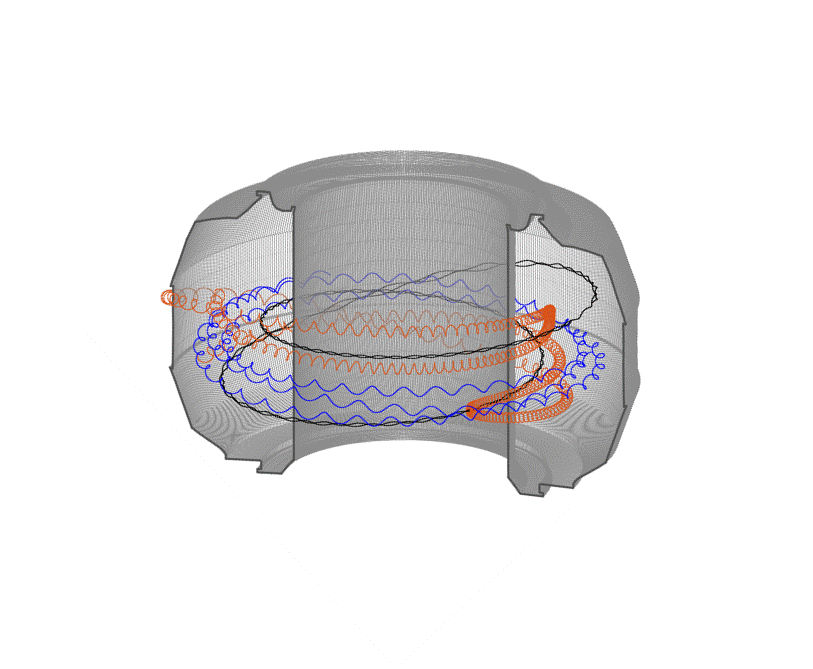
Filter News
Area of Research
- Advanced Manufacturing (3)
- Biology and Environment (78)
- Biology and Soft Matter (1)
- Clean Energy (44)
- Climate and Environmental Systems (4)
- Computational Biology (1)
- Computational Engineering (2)
- Computer Science (4)
- Fusion and Fission (17)
- Fusion Energy (11)
- Materials (48)
- Materials for Computing (9)
- Mathematics (1)
- National Security (19)
- Neutron Science (58)
- Nuclear Science and Technology (10)
- Quantum information Science (2)
- Supercomputing (49)
News Type
News Topics
- (-) Big Data (44)
- (-) Clean Water (27)
- (-) Cybersecurity (17)
- (-) Environment (147)
- (-) Exascale Computing (28)
- (-) Fusion (40)
- (-) Nanotechnology (28)
- (-) Neutron Science (74)
- (-) Physics (33)
- 3-D Printing/Advanced Manufacturing (73)
- Advanced Reactors (21)
- Artificial Intelligence (61)
- Bioenergy (67)
- Biology (78)
- Biomedical (40)
- Biotechnology (14)
- Buildings (38)
- Chemical Sciences (35)
- Climate Change (72)
- Composites (17)
- Computer Science (127)
- Coronavirus (28)
- Critical Materials (16)
- Decarbonization (55)
- Education (1)
- Emergency (2)
- Energy Storage (60)
- Fossil Energy (5)
- Frontier (26)
- Grid (46)
- High-Performance Computing (56)
- Hydropower (11)
- Irradiation (2)
- Isotopes (32)
- ITER (5)
- Machine Learning (33)
- Materials (78)
- Materials Science (80)
- Mathematics (9)
- Mercury (10)
- Microelectronics (2)
- Microscopy (31)
- Molten Salt (6)
- National Security (42)
- Net Zero (10)
- Nuclear Energy (74)
- Partnerships (19)
- Polymers (17)
- Quantum Computing (25)
- Quantum Science (40)
- Renewable Energy (1)
- Security (12)
- Simulation (39)
- Software (1)
- Space Exploration (22)
- Statistics (2)
- Summit (37)
- Sustainable Energy (92)
- Transformational Challenge Reactor (3)
- Transportation (62)
Media Contacts

A new microscopy technique developed at the University of Illinois at Chicago allows researchers to visualize liquids at the nanoscale level — about 10 times more resolution than with traditional transmission electron microscopy — for the first time. By trapping minute amounts of...

A team led by Oak Ridge National Laboratory has discovered that residents living in arid environments share a desire for water security, which can ultimately benefit entire neighborhoods. Las Vegas, Nevada’s water utility was the first utility in the United States to implement ...

An Oak Ridge National Laboratory–led team has learned how to engineer tiny pores embellished with distinct edge structures inside atomically-thin two-dimensional, or 2D, crystals. The 2D crystals are envisioned as stackable building blocks for ultrathin electronics and other advance...

Fusion scientists from Oak Ridge National Laboratory are studying the behavior of high-energy electrons when the plasma that generates nuclear fusion energy suddenly cools during a magnetic disruption. Fusion energy is created when hydrogen isotopes are heated to millions of degrees...

As leader of the RF, Communications, and Cyber-Physical Security Group at Oak Ridge National Laboratory, Kerekes heads an accelerated lab-directed research program to build virtual models of critical infrastructure systems like the power grid that can be used to develop ways to detect and repel cyber-intrusion and to make the network resilient when disruption occurs.

Energy storage could get a boost from new research of tailored liquid salt mixtures, the components of supercapacitors responsible for holding and releasing electrical energy. Oak Ridge National Laboratory’s Naresh Osti and his colleagues used neutrons at the lab’s Spallation Neutron ...

Nuclear physicists are using the nation’s most powerful supercomputer, Titan, at the Oak Ridge Leadership Computing Facility to study particle interactions important to energy production in the Sun and stars and to propel the search for new physics discoveries Direct calculatio...

The same fusion reactions that power the sun also occur inside a tokamak, a device that uses magnetic fields to confine and control plasmas of 100-plus million degrees. Under extreme temperatures and pressure, hydrogen atoms can fuse together, creating new helium atoms and simulta...

A new Oak Ridge National Laboratory-developed method promises to protect connected and autonomous vehicles from possible network intrusion. Researchers built a prototype plug-in device designed to alert drivers of vehicle cyberattacks. The prototype is coded to learn regular timing...

With the licensing to Enchi Corporation of a microbe custom-designed to produce ethanol efficiently, Oak Ridge National Laboratory (ORNL) and the BioEnergy Science Center (BESC) mark the culmination of 10 years’ research into ways to improve biofuels production. Enchi ha...


